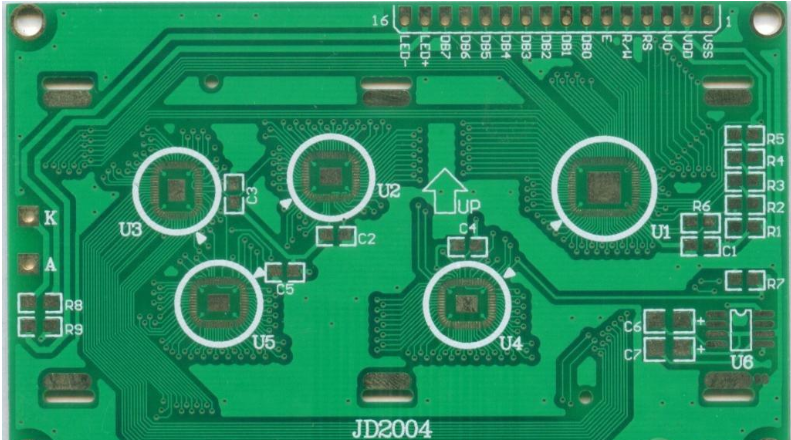In order to suppress the crosstalk between the wires of the PCB circuit board, when designing the wiring, you should try to avoid long-distance equal wiring, extend the distance between the wires as much as possible, and try not to cross the signal wires with the ground wires and the power wires. Setting a grounded printed line between some signal lines that are very sensitive to interference can effectively suppress crosstalk.
one:
Definition of Temperature Shock Thermal Shock Testing is often called Temperature Shock Testing or Temperature Cycling, high and low temperature thermal shock testing. According to GJB 150.5A-2009 3.1, the temperature shock is a sharp change in the atmospheric temperature around the equipment, and the temperature change rate is greater than 10 degrees/min, which is a temperature shock. MIL-STD-810F 503.4 (2001) holds a similar view.
two:
The purpose of the temperature shock test The purpose of the temperature shock test: (PCB circuit board welding) can be used to find product design and process defects in the engineering development stage; product finalization or design appraisal and mass production stage are used to verify the product's adaptability to the temperature shock environment, To provide a basis for design finalization and mass production acceptance decision; as an environmental stress screening application, the purpose is to eliminate early product failures.

three:
Application of temperature shock Temperature changes in electronic equipment and components are common. When the device is not powered, its internal parts experience slower temperature changes than the parts on its outer surface.
Under the following conditions, rapid temperature changes can be foreseen: -When the equipment is transferred from a warm indoor environment to a cold outdoor environment, or vice versa; -When the equipment suddenly cools when exposed to rain or immersed in cold water; - -Installed in external airborne equipment; -Under certain transportation and storage conditions.
A high temperature gradient will occur in the equipment after power-on. Due to temperature changes, components (PCBA chip processing plants) will experience stress. For example, next to high-power resistors, radiation will cause the surface temperature of adjacent components to rise, and The other parts are still cold. When the cooling system is energized, the artificially cooled components will experience rapid temperature changes. It can also cause rapid temperature changes of components during the manufacturing process of the equipment. The number and magnitude of temperature changes and the time interval are all important.
Four: the effect of temperature shock Temperature shock usually has a more serious impact on the part close to the outer surface of the equipment. The farther away from the outer surface (of course, related to the characteristics of the relevant material), the slower the temperature change, the less obvious the effect. Transport boxes, packaging, etc. will also reduce the impact of temperature shocks on enclosed equipment. Sudden temperature changes may temporarily or permanently affect the operation of the equipment. The following are examples of problems that may arise when the equipment is exposed to a temperature shock environment. Consider the following typical questions to help determine whether this test is applicable to the equipment under test.
(1) Typical physical effects are:
1) Fragmentation of glass containers and optical instruments;
2) Clamping or loosening of moving parts;
3) Cracks in the solid pellets or grains in the explosive;
4) The shrinkage or expansion rate, or induced strain rate of different PCB materials is different;
5) Deformation or cracking of parts;
6) The surface coating of PCB is cracked;
7) Leakage of the sealed cabin;
8) Insulation protection fails.
(2) Typical chemical effects are:
1) The components are separated;
2) The chemical reagent protection is invalid.
(3) Typical electrical effects are:
1) Changes in electrical and electronic components;
2) Electronic or mechanical failure caused by rapid condensation or frost;
3) Excessive static electricity.
5. According to IEC and national standards, there are three types of thermal shock test methods:
1. Test Na: the rapid temperature change with the specified conversion time; air;
2. Test Nb: temperature change at a prescribed rate of change; air;
3. Test Nc: rapid temperature change in two-liquid tank method; liquid;
In the above three tests, 1 and 2 use air as the medium, and the third one uses liquid (water or other liquids) as the medium. The conversion time of 1, 2 is longer, and the conversion time of 3 is shorter.